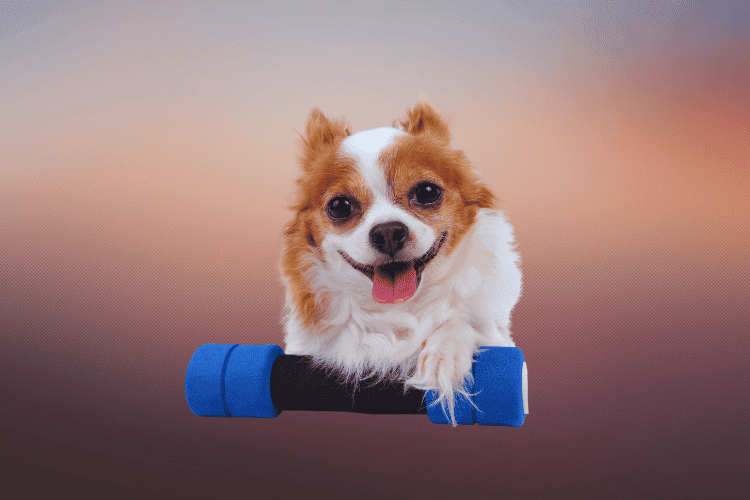Helping your Dogs with Weight Loss is crucial for their overall well-being. Just like humans, dogs can struggle with weight gain, which can lead to various health problems. In this blog post, we will explore popular approaches to assist your dog’s weight loss journey, ensuring they stay fit, active, and happy.
1. Adopt a balanced and portion-controlled diet:
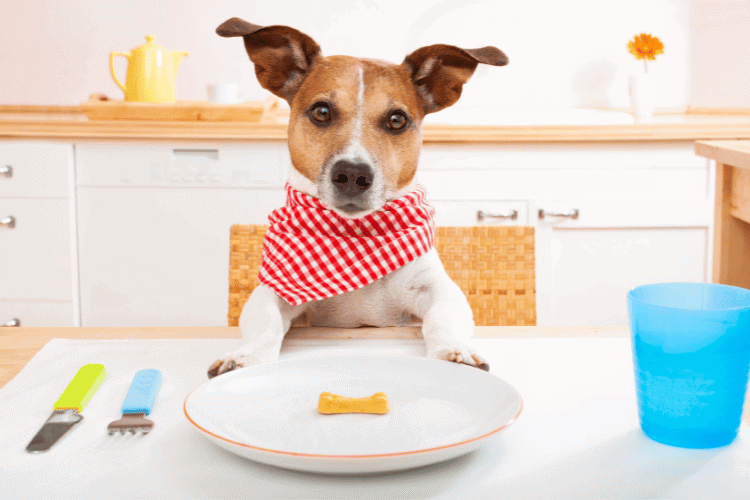
A balanced diet is crucial for weight loss in dogs. Work with your veterinarian to select a high-quality, low-calorie dog food that suits your dog’s nutritional needs. Avoid free-feeding and instead, establish a controlled feeding schedule. Measure your dog’s food portions accurately to prevent overeating. By controlling their caloric intake, you can help your dog shed those extra pounds.
2. Regular exercise for Dogs Weight Loss:
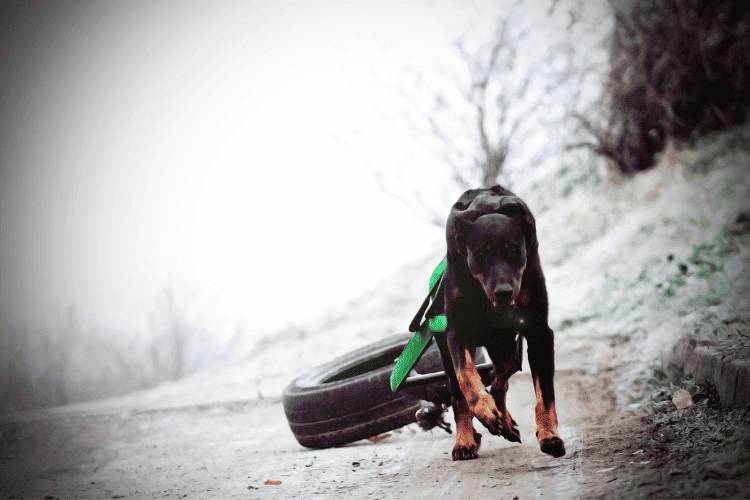
Physical activity plays a vital role in your dog’s weight loss journey. Develop a regular exercise routine based on your dog’s capabilities and health condition. Engage in activities such as brisk walks, jogging, playing fetch, or swimming. Start with shorter sessions and gradually increase the intensity and duration over time. Regular exercise not only burns calories but also improves cardiovascular health and keeps your dog mentally stimulated.
Encouraging Exercises for Dogs Weight Loss:
Engage in interactive play sessions with your dog. Toss a ball or play a game of tug-of-war to stimulate their mind and body. Not only does this provide exercise, but it also strengthens the bond between you and your furry friend.
Consistent Exercise for Dogs Weight Loss:
Aim for at least 30 minutes to 1 hour of exercise each day, depending on your dog’s age, breed, and overall health. Breaking the exercise into shorter sessions throughout the day can be effective for dogs with lower stamina.
Take your dog to different environments for walks or hikes. Exploring new places stimulates their senses and keeps them mentally engaged. Be mindful of your dog’s physical abilities and choose appropriate trails or paths. Regularly track your dog’s weight and overall progress.
3. Use puzzle toys and treat-dispensing toys:

Incorporate mentally stimulating toys that require your dog to work for their treats or food. Puzzle toys and treat-dispensing toys keep your dog engaged, encourage movement, and provide a reward for their efforts . Teaching basic commands and engaging in training activities keep your dog active and mentally stimulated.
4. Substitute high-calorie treats with healthier alternatives:

Treats are an integral part of training and bonding with your dog. However, high-calorie treats can hinder weight loss progress. Go for healthier alternatives such as carrots, green beans, or small pieces of lean meats. These options provide a satisfying reward without adding excessive calories. Remember, moderation is key when it comes to treats, even the healthier ones.
Must Read Dog Diarrhea: Causes, Symptoms & Treatment
5. Monitor food intake and track calories:

To effectively manage your dog’s weight loss, it is crucial to monitor their food intake. Keep track of the calories consumed, including treats. Measuring portions accurately and using specific weight loss diet plans recommended by your veterinarian can help you stay on track. Tracking food intake allows you to make necessary adjustments and ensure your dog is not consuming more calories than necessary.
6. Aim for slow and steady weight loss:

While it may be tempting to achieve rapid weight loss in your dog, it is important to prioritize their well-being. Rapid weight loss can have adverse effects on their health. Instead, aim for slow and steady weight loss, following your veterinarian’s guidance on the appropriate rate of weight loss. This approach ensures your dog’s overall health and reduces the risk of weight regain.
7. Regular weigh-ins and progress tracking:
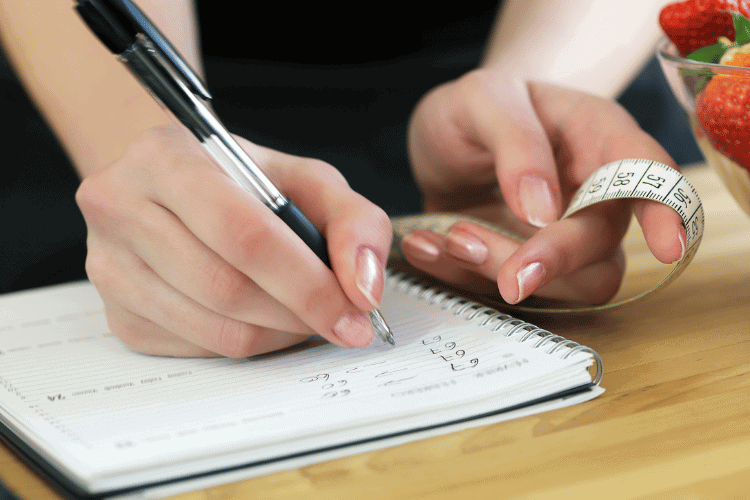
Weigh your dog regularly to monitor their progress. This will help you assess the effectiveness of the weight loss plan and make any necessary adjustments. Keep a record of their weight and body condition score. Regular progress tracking allows you to celebrate milestones and stay motivated throughout the weight loss journey.
8. Environmental enrichment and mental stimulation:

Weight loss should not only focus on diet and exercise but also on providing mental and physical stimulation to your dog. Boredom can lead to overeating, so ensure your dog’s environment is enriched. Provide puzzle toys, and interactive games, and engage in training sessions to keep their mind stimulated. Mental and physical activities contribute to their overall well-being and aid in weight loss efforts.
9. Consult a veterinarian for professional guidance:
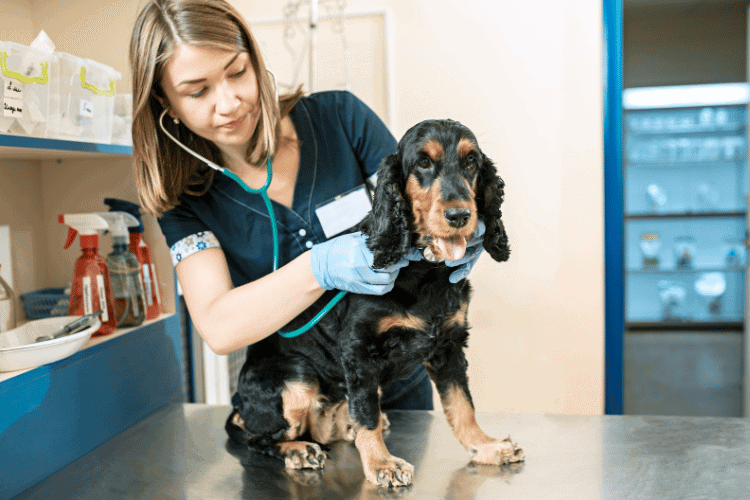
Before embarking on any weight loss plan for your dog, it is essential to consult a veterinarian. They will assess your dog’s current weight, body condition, and overall health. This professional assessment allows them to determine the ideal weight goal for your dog and identify any underlying health issues that may contribute to weight gain. Veterinary guidance ensures a safe and effective weight loss journey for your furry friend.
10. Family Commitment to Dogs Weight Loss:

Weight loss efforts are most successful when the entire family is involved and committed. Communicate with family members about the weight loss plan and ensure everyone is on board. Maintain consistency in feeding, exercise, and training. By creating a supportive environment, you can help your dog achieve their weight loss goals.
Accurate Weighing Techniques

Measuring your dog’s weight is crucial for monitoring their health and managing their weight effectively. Here are some techniques to ensure accurate measurements:
1. Choose an appropriate scale:
Select a scale specifically designed for weighing dogs. Look for scales with a large platform and a weight capacity suitable for your dog’s size. These scales provide stability and accurate readings, ensuring reliable measurements.
2. Familiarize your dog with the scale:
Introduce your dog to the scale gradually. Allow them to sniff and investigate the scale without any pressure. Offer treats or use positive reinforcement to create a positive association with the scale. This helps alleviate anxiety and makes future weighing sessions easier.
3. Weigh yourself separately:
If using a regular bathroom scale, weigh yourself first and then pick up your dog and step onto the scale together. Take note of the combined weight. Next, weigh yourself alone and subtract your weight from the combined weight to determine your dog’s weight. While not highly precise, this method provides a rough estimate for quick check-ups.
4. Utilize a towel or blanket:
For small or anxious dogs that may have trouble sitting still on the scale, place a towel or blanket on the scale’s platform. This creates a more secure and comfortable surface, making it easier to obtain accurate weight measurements.
5. Prioritize safety:
Ensure the safety and well-being of your dog during the weighing process. Be cautious and avoid any sudden movements or mishandling that could startle or harm your dog. If necessary, enlist the assistance of another person to help hold or soothe your dog while you record the weight measurement.
6. Establish a consistent weighing routine:
Choose a specific time of day and weigh your dog at regular intervals to track their progress accurately. Consistency is key for monitoring weight changes effectively. Consider weighing your dog on an empty stomach to minimize variations caused by food or water intake.
7. Maintain a weight record:
Keep a record of your dog’s weight measurements over time. This log allows you to track trends, identify any significant changes, and provide valuable information to your veterinarian. It serves as a helpful reference for discussions about your dog’s health and weight management plan.
8. Seek Assistance for Dogs Weight Loss:
If your dog is too large or uncooperative to be weighed at home, consult your veterinarian for assistance. They may have specialized equipment or facilities to weigh larger dogs accurately or offer alternative weighing methods.
Remember, accurately measuring your dog’s weight is essential for its overall well-being. By following these techniques, you can ensure precise measurements and effectively monitor your dog’s weight. If you have any concerns or questions about your dog’s weight, seek guidance from your veterinarian for professional advice and support.
Assisting your dog’s weight loss journey requires a holistic approach that includes professional guidance, a balanced diet, regular exercise, and monitoring of food intake. With commitment, consistency, and the right strategies, you can support your dog in achieving a healthy weight and improving their overall quality of life. Remember to consult your veterinarian throughout the process for personalized advice and guidance.

